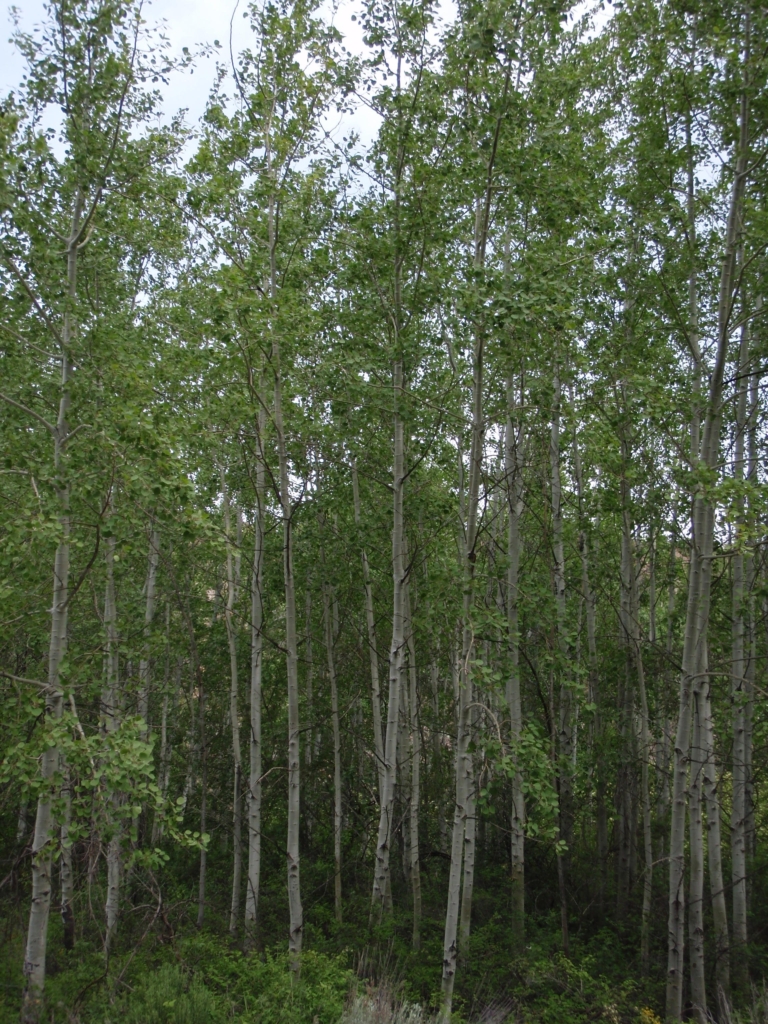Quaking Aspen
Populus tremuloides
Plant Description
Quaking aspen is a fast-growing deciduous tree native to North America, found across a wide range of habitats including montane forests, valleys, and riparian areas. It typically grows 40–80 feet tall and is easily recognized by its smooth, pale bark and distinctive round leaves that shimmer elegantly in the breeze due to long, flattened petioles. In spring, it produces catkins that release pollen, and its seeds are wind-dispersed. Quaking aspen forms extensive clonal groves, stabilizing soils, providing critical habitat and forage for wildlife, and contributing to forest biodiversity and successional dynamics. In autumn, the leaves turn vibrant yellow. While quaking aspen is infrequent west of the Cascades now, it is thought to have been more common in the Willamette Valley before the 1800’s. It grows well in moist areas where it can stabilize soil, meaning it may be an important plant in areas impacted by emerald ash borer.
The largest known organism on earth is a forest of quaking aspen clones that originated with a single tree, located in Utah, and named Pando.
Plant Details
| Life Forms | |
|---|---|
| Habitats | |
| Soil and Moisture Conditions | |
| Special Uses | |
| Shade Preference | |
| Mature Height | 35-50' |


